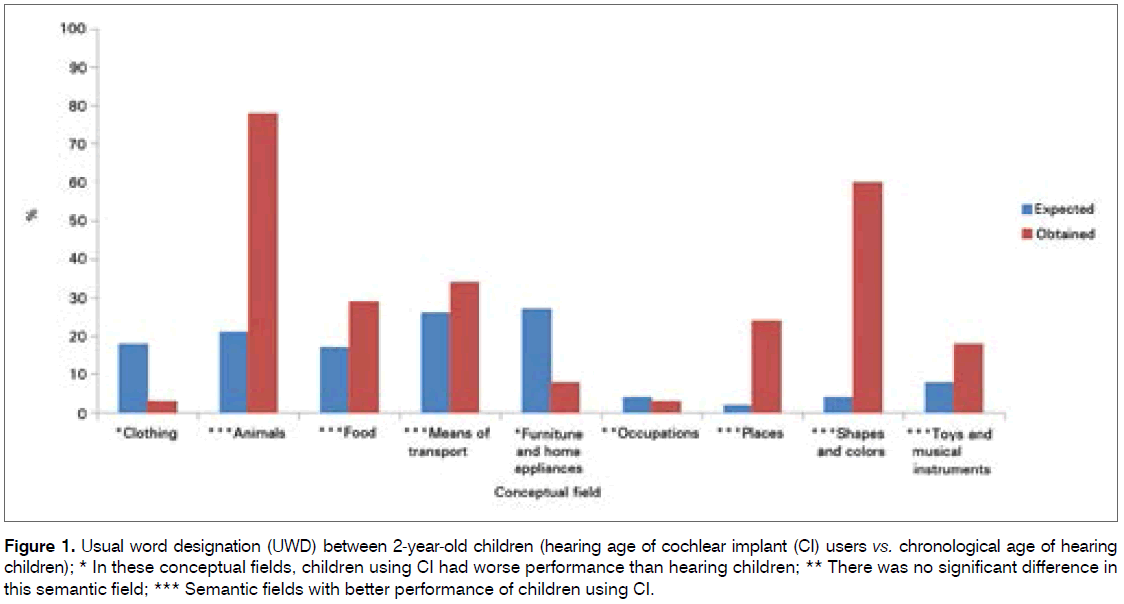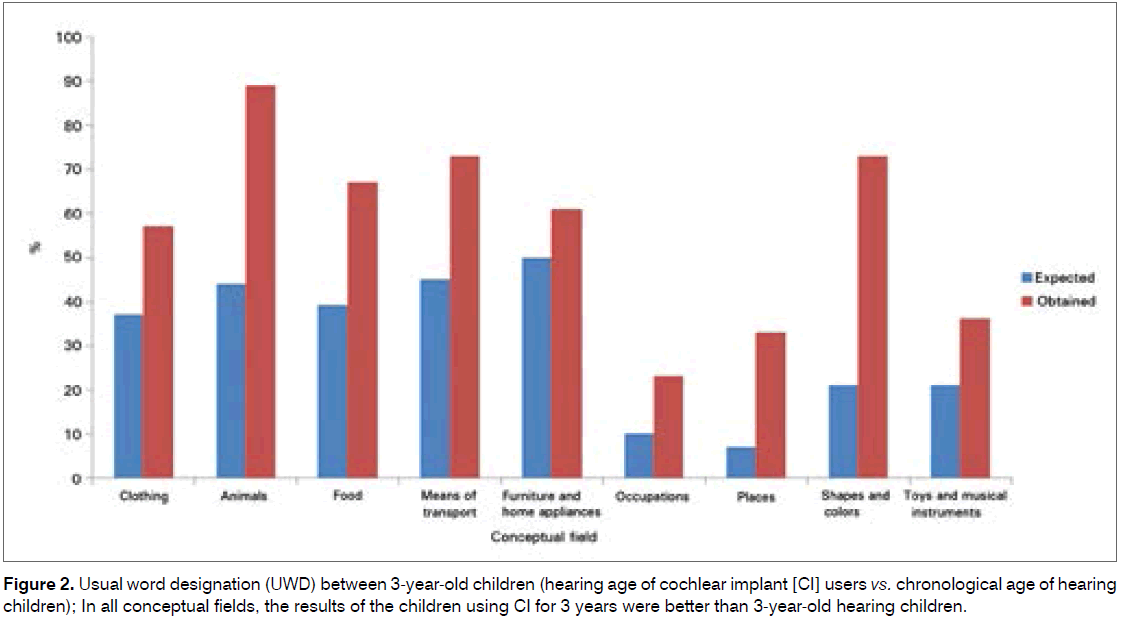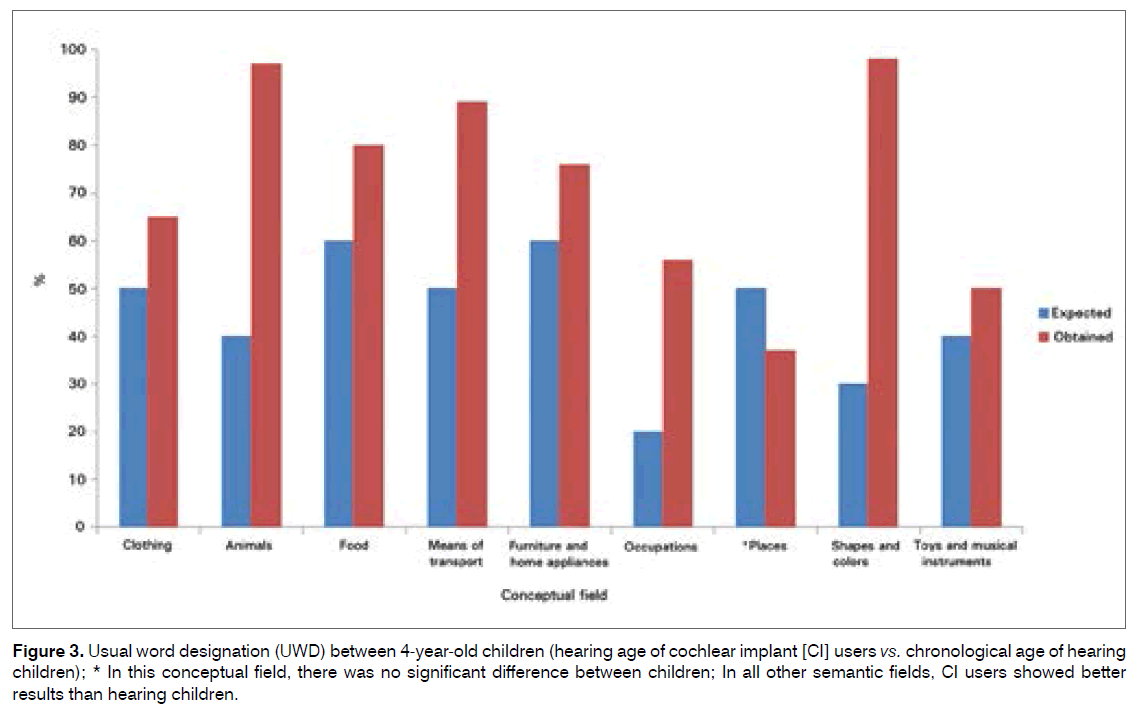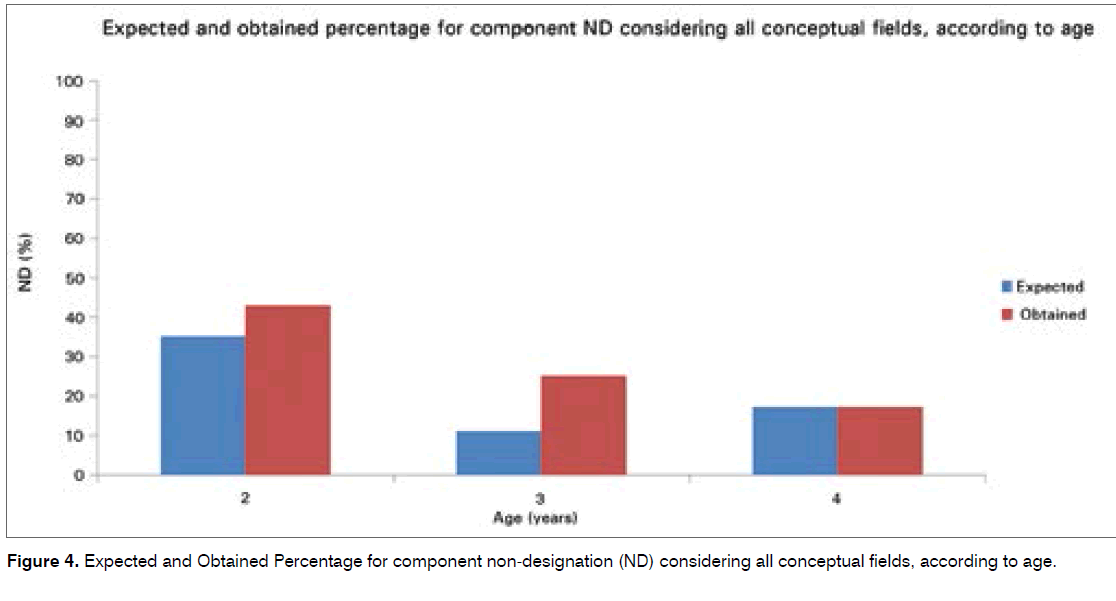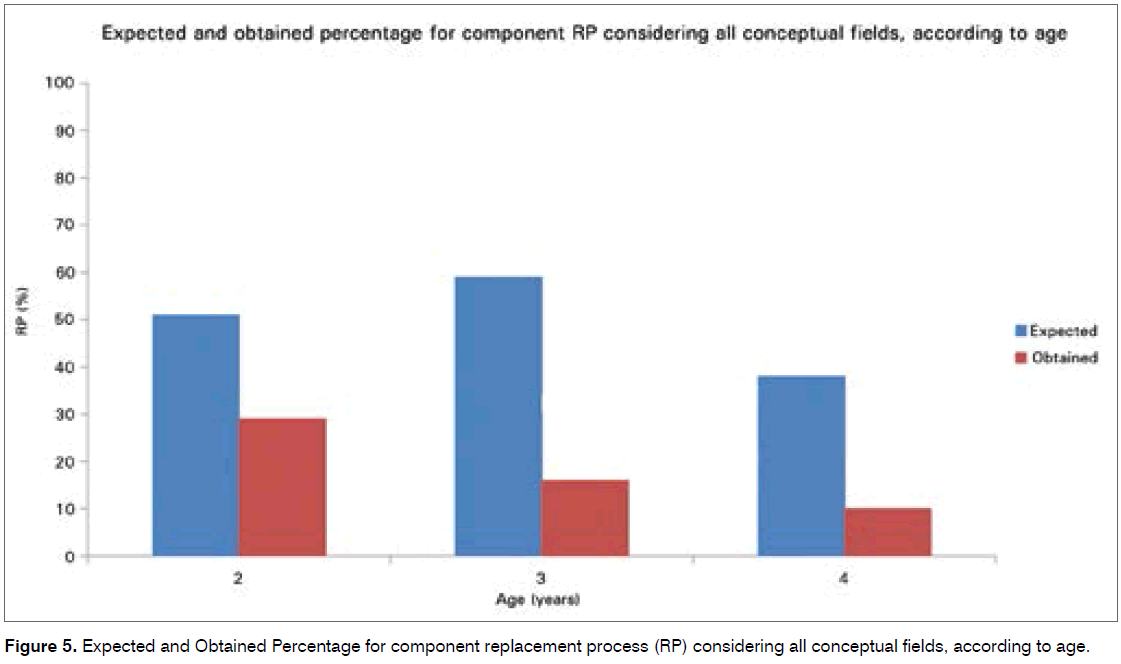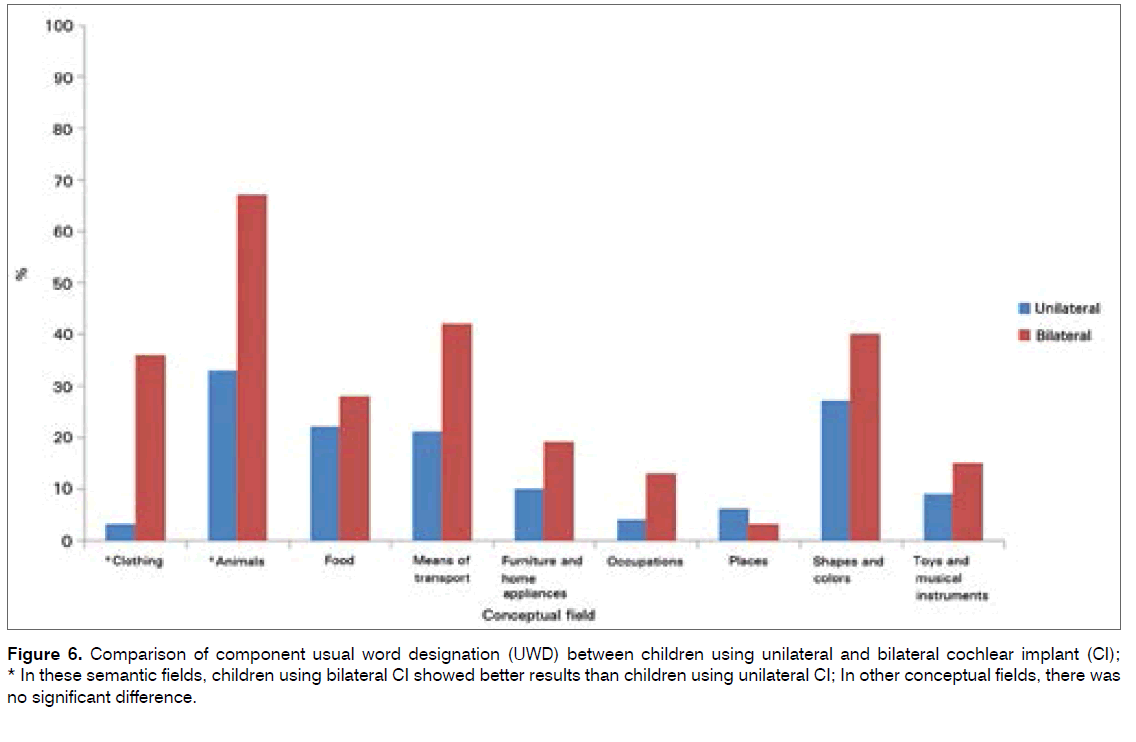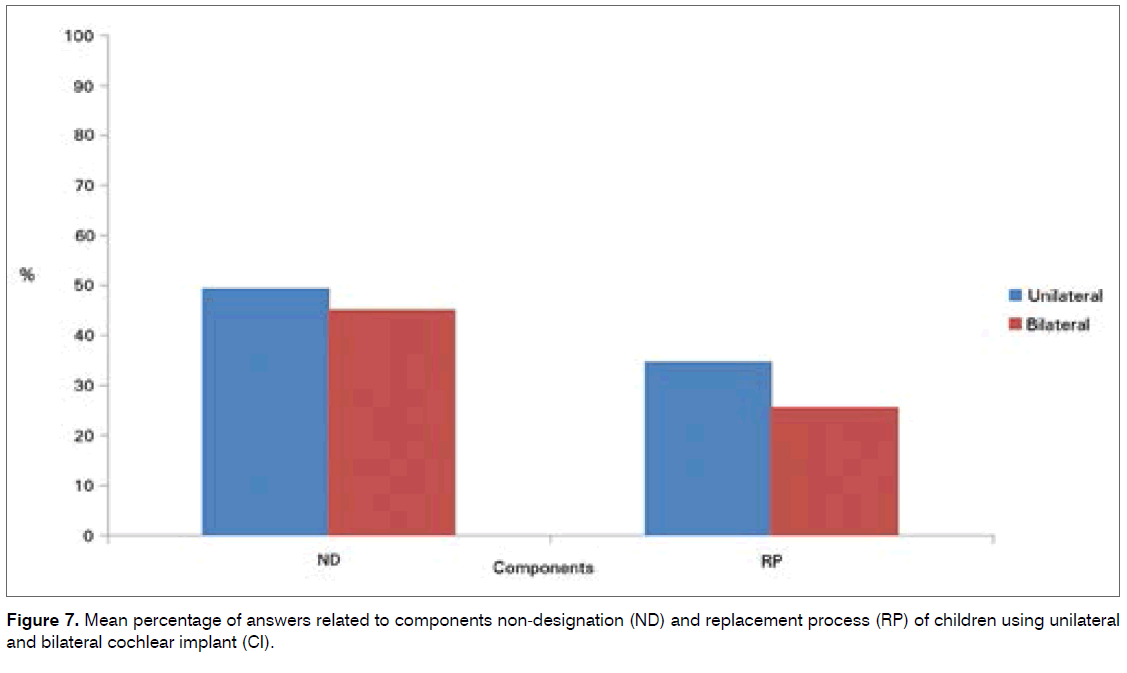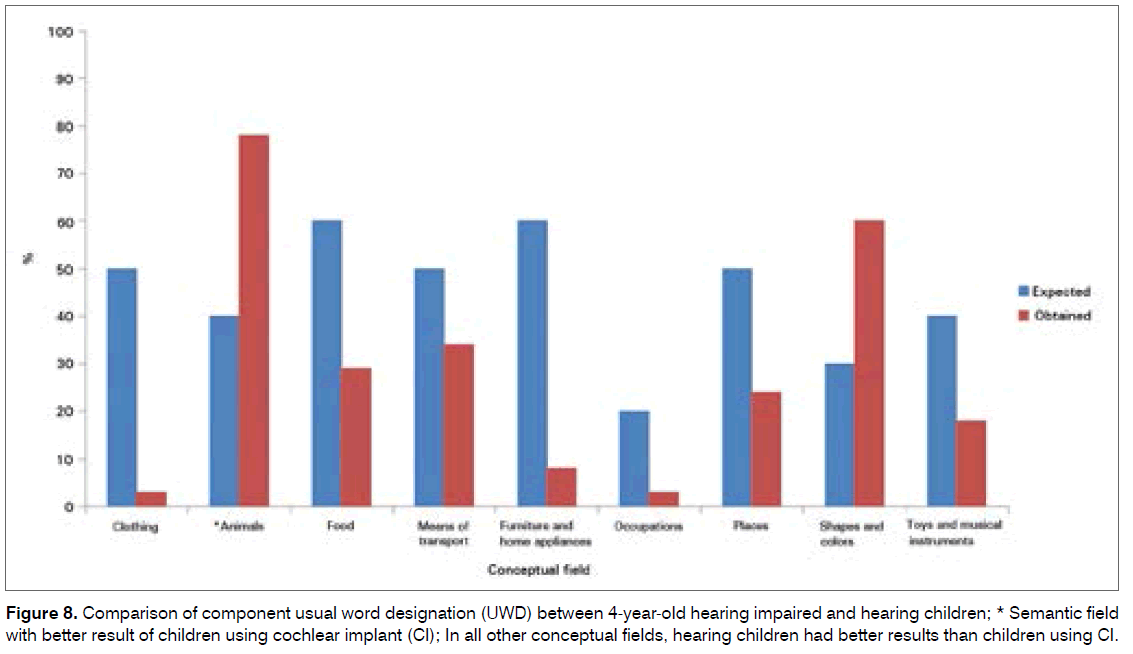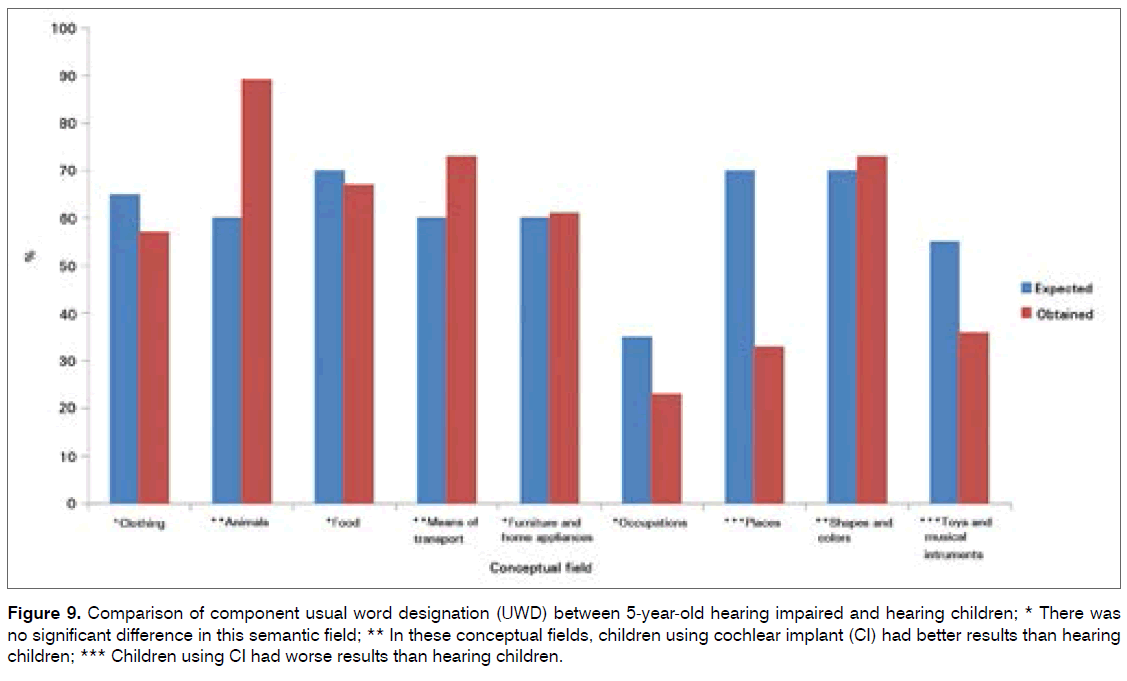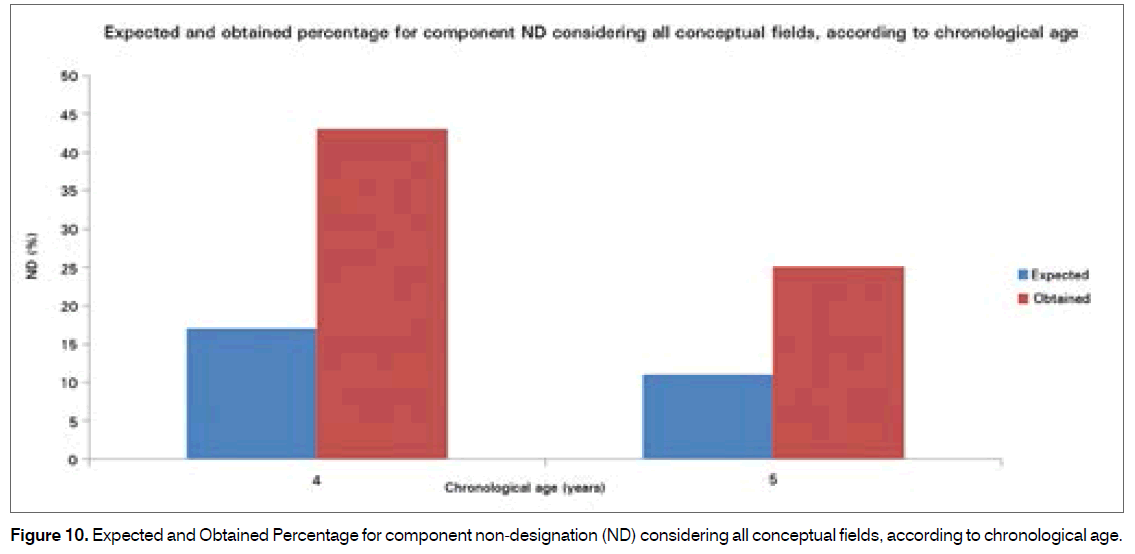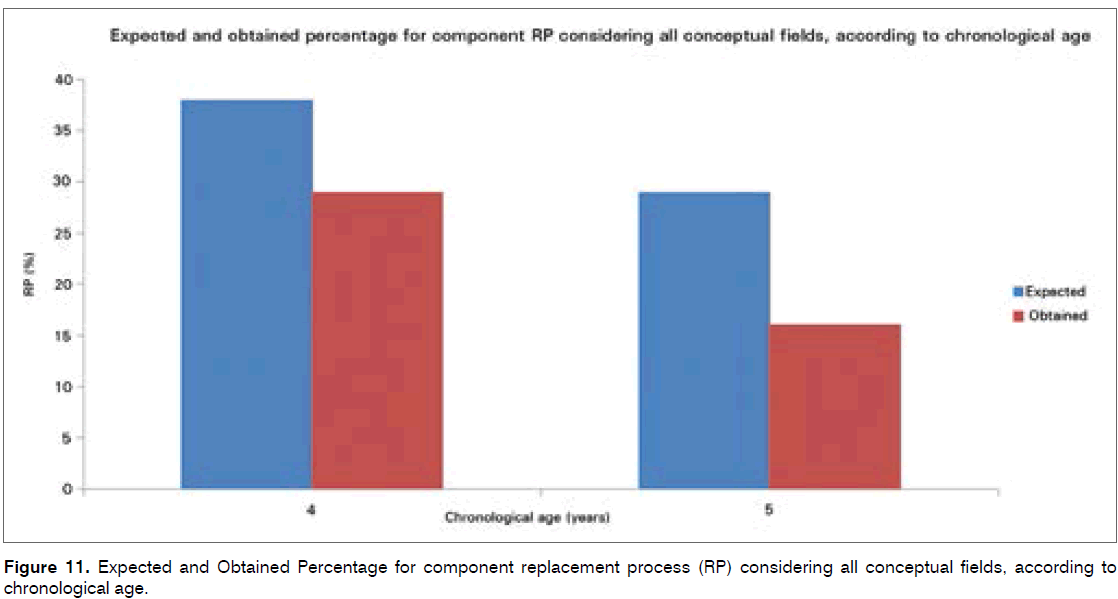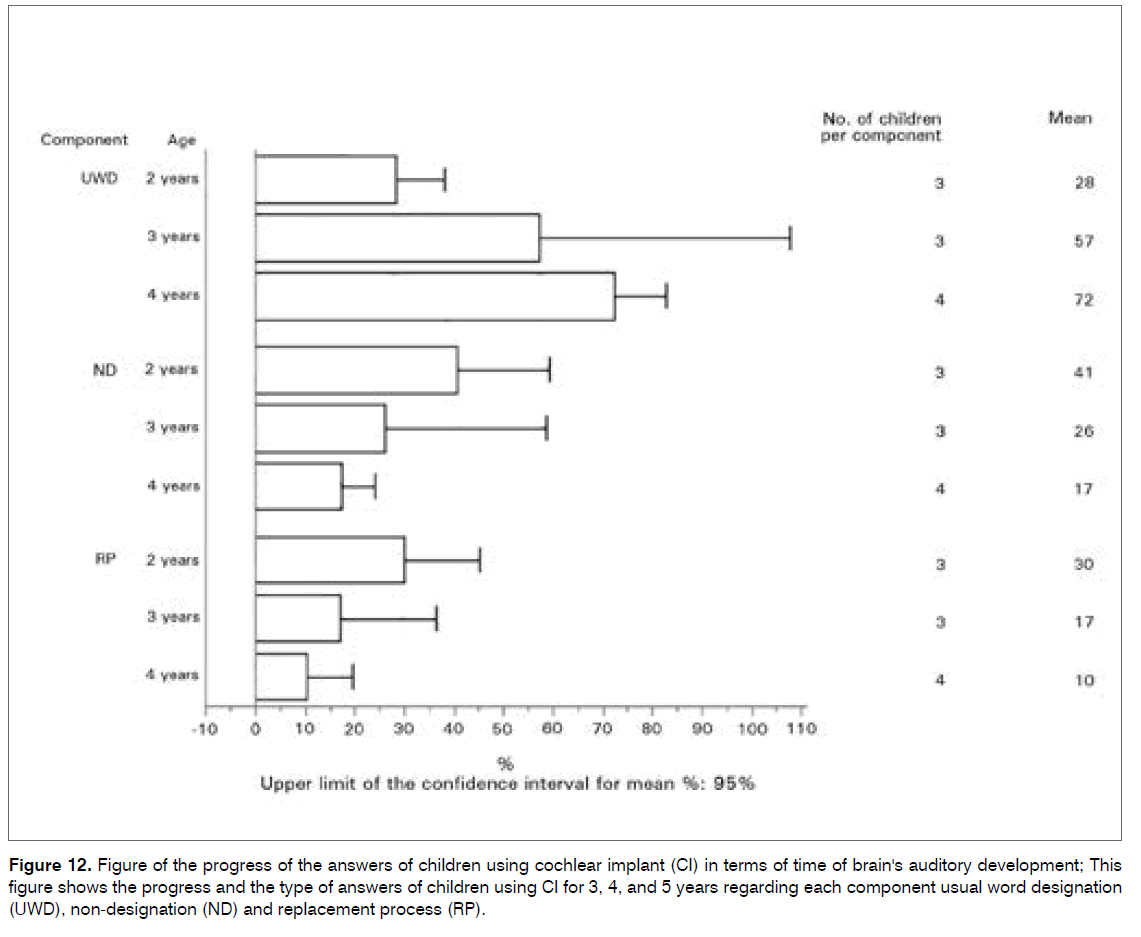The International Tinnitus Journal
Official Journal of the Neurootological and Equilibriometric Society
Official Journal of the Brazil Federal District Otorhinolaryngologist Society
ISSN: 0946-5448

Google scholar citation report
Citations : 12717
The International Tinnitus Journal received 12717 citations as per google scholar report
The International Tinnitus Journal peer review process verified at publons
Indexed In
- Excerpta Medica
- Scimago
- SCOPUS
- Publons
- EMBASE
- Google Scholar
- Euro Pub
- CAS Source Index (CASSI)
- Index Medicus
- Medline
- PubMed
- UGC
- EBSCO
Volume 19, Issue 1 / June 2014
Research Article Pages:46-56
Comparative analysis of vocabulary in children with cochlear implants
Authors: Marina Santos Teixeira; Carlos Augusto Costa Pires de Oliveira; Fernanda Ferreira Caldas; Lucieny Silva Martin Serra; Carolina Costa Cardoso; Tatiana Medeiros Deperon; Fayez Bahmad Jr
PDF
Abstract
Introduction: The use of tests assessing the speech of patients who underwent cochlear implant (CI) surgery is warranted to increase knowledge on the development of these patients’ language skills. The ABFW Child Language Test evaluates vocabulary, phonology, fluency, and pragmatics and can be administered to these children. Objective: To evaluate the vocabulary of children using CI. Method: This study included 16 children who underwent CI surgery between 1-4 years and 11 months old. Patients were divided into five groups according to age upon CI activation. Results: In comparison with the age of brain’s auditory development vs. chronological age of hearing children, all children using CI performed better. The comparison between children using unilateral CI and bilateral CI showed that those using bilateral CI had better results. When we compared children’s performance considering the chronological age of deaf and hearing children, hearing children performed better. However, there were similar results when patients effectively used their CI and attended auditory rehabilitation sessions. Conclusion: In our study, the vocabulary of children using CI is similar to the vocabulary of hearing children.
Keywords: cochlear implants, hearing loss, language and hearing sciences, speech
Introduction
Oral language is the most peculiar form of communication between human beings. Language acquisition requires the association of complex and specific processes.
There are several theories attempting to explain the oral language acquisition. Skinner [1] stated that language acquisition occurs based on the influence of the environment where people live, regardless of their individual intrinsic abilities. Chomsky [2], in its innate theory, suggested that babies are born with neural and structural capacity to acquire speech; they only need to be exposed to language. According to Chomsky [2], everyone has linguistic capacity to learn how to speak. Piaget [3], on the other hand, believed that, before being exposed to language, individuals must have developed reasoning or cognition in order to develop speech. That is, language acquisition is subordinated to the cognitive capacity of the human being. Finally, Vygotsky [4] argued that language is a process of interaction with others; it is the result of the interactions between children and their speech model.
Language is a symbolic system consisting of form, content, and use. These components determine oral communication and integration within a linguistic community. “Form” can be explained as the formation of the language, it is related to how sounds are combined to make up words and how words relate to make up sentences. “Content” is the meaning of words within sentences or in the speech. “Use” is the reason why the speaker is communicating orally, and the message may have the purpose of communicating with other people, such as asking questions or providing information, or communicating with oneself, such as reasoning [5].
In terms of content, lexical development is the main manner of providing meaning to the words. Vocabulary is directly related to the development of oral language. Vocabulary may be used to predict possible language acquisition delay and academic success [6,7].
Despite the different results in the literature about the exact best time for vocabulary development, a consensus has been reached about a critical period, which is between the second and third year of life [6]. In terms of numbers of words, a child’s vocabulary will reach the same number as that of an adult around [5] years old. However, it will be different in terms of quality because there are differences in the choice of the words used by children as they still have a limited understanding of the world [8].
Mastering oral language is a difficult task for hearing impaired children because sensory integrity is essential for acquisition of a first language. Currently, cochlear implant (CI) is the most effective technological resource to treat hearing impairment. In addition making it possible for hearing impaired people to hear because it restores the hearing ability in these individuals, there is also an incidental acquisition of oral language [9].
The use of this electronic device provides to people with prelingual severe-to-profound hearing loss the opportunity to hear environmental sounds as well as speech sounds [10]. Such possibility has a major impact on oral language acquisition in hearing impaired children, especially those who undergo CI surgery early because it makes basic auditory information available, and such information is essential to acquire communication skills.
Nevertheless, a successful CI surgery does not guarantee that all individuals will acquire oral language because there is a wide range of factors that may have an influence on acquisition of oral language, such as quality of social interactions [10], length of time of device use, time of hearing impairment, and adherence to and participation in speech therapy sessions [11,12].
Material and Methods
Patients
The sample consisted of 16 children using CI who underwent CI surgery between 1 and 4 years old. All patients received hearing rehabilitation therapy using the auditory-verbal method. Patients were divided into five groups:
Group 1: 3 children whose hearing age was between 1 year and 1 year and 11 months old and used unilateral CI.
Group 2: 3 children whose hearing age was between 1 year and 1 year and 11 months, but had bilateral CI.
Group 3: 3 children using CI for 2 years and 2 years and 11 months.
Group 4: 3 children using CI for 3 years and 3 years and 11 months.
Group 5: 4 children using CI for 4 years and 4 years and 11 months.
Materials
We used the ABFW Child Language Test to test the participants’ vocabulary. This test evaluates phonology, vocabulary, fluency, and pragmatics and it was designed by Andrade et al. Answers were described in the analysis charts. All tests were video recorded for later analysis using a SONY Cyber-shot 8.1-megapixel camera.
Method
The test administration took 90 minutes on average. This time was divided into two sessions of 45 minutes each. The sessions could be shorter or longer depending on the specific characteristics of each participant.
The test consists of 118 ures, divided into nine semantic categories: clothing, animals, food, means of transport, furniture and home appliances, occupations, places, shapes and colors, and toys and musical instruments. All children were tested using the same method.
With the purpose of analyzing children’s answers, the test makes it possible to assess the mechanisms used to try to designate the target word. The answers were divided into usual word designation (UWD), when children correctly designated the picture, non-designation (ND), when children did not say anything about the picture or said that they did not know its name, and replacement process (RP), when children used different words to designate the picture or described it.
Results
The sample consisted of 16 children using CI. Three of them used bilateral CI and the other 13 children used unilateral CI. All patients attended rehabilitation sessions at the same center of hearing rehabilitation.
The first analyses were performed to compare the age of brain’s auditory development (length of CI use) with the chronological ages of hearing children, who are the normal standard provided by the test in our study. Children whose age of brain’s auditory development was 2 years were compared with 2-year-old hearing children.
Considering the component UWD, the proportion of pictures related to the conceptual fields clothing and furniture and home appliances was significantly lower when compared with the test results of the hearing children (p = 0.0197 and p < 0.0001, respectively). Within the conceptual field occupations, the proportion of pictures evaluated did not differ significantly when compared with the test performed by hearing children (p = 0.6612). For other conceptual fields, the proportion of pictures tested showed better results than expected when compared with the assessments of hearing children (Figure 1).
Figure 1: Usual word designation (UWD) between 2-year-old children (hearing age of cochlear implant (CI) users vs. chronological age of hearing children); * In these conceptual fields, children using CI had worse performance than hearing children; ** There was no significant difference in this semantic field; *** Semantic fields with better performance of children using CI.
The following analyzes compared the age of brain’s auditory development of children using CI with the chronological ages of 3-year-old hearing children.
Considering the component UWD within all conceptual fields, the proportion of pictures tested showed better results than expected when compared with the assessments of hearing children (Figure 2).
Next, we compared 4-year-old children. Considering the component UWD within only the conceptual field places, the proportion of pictures tested did not differ significantly when compared with the assessments of hearing children (p = 0.1613). For other conceptual fields, the proportion of pictures tested showed better results than expected when compared with the assessments of hearing children (Figure 3).
Figure 3: Usual word designation (UWD) between 4-year-old children (hearing age of cochlear implant [CI] users vs. chronological age of hearing children); * In this conceptual field, there was no significant difference between children; In all other semantic fields, CI users showed better results than hearing children.
All comparisons between age of brain’s auditory development of children using vs. and chronological age of hearing children showed that the group of children using CI had better results in the component ND and worse results in the RP (Figures 4 and 5). Only 4-yearold children showed no significant difference in the component non-designation.
We also administered a vocabulary test to children using unilateral CI and children using bilateral CI. Both groups included children whose age of brain’s auditory development was between 1 year and 3 months and 1 year and 8 months.
Considering the conceptual fields clothing and animals, the percentage of pictures evaluated in the component UWD (Figure 6) was significantly higher in the bilateral group than in the unilateral group. Conversely, the percentage of pictures evaluated in the components ND and RP were significantly lower in the bilateral group than in the unilateral group. Considering the other conceptual fields, the percentage of pictures evaluated in these three components did not differ significantly between children using unilateral CI and those using bilateral CI (Figure 7).
Figure 6: Comparison of component usual word designation (UWD) between children using unilateral and bilateral cochlear implant (CI); * In these semantic fields, children using bilateral CI showed better results than children using unilateral CI; In other conceptual fields, there was no significant difference.
Another analysis was performed using the vocabulary test. We also evaluated the comparison between chronological ages. That is, we tested a group of 4-year-old children using CI compared wi a group of hearing children of the same age group. A second assessment was also similarly performed involving 5-year-old children.
In terms of 4-year-old children considering the component UWD, in the conceptual fields animals and shapes and colors, the proportion of pictures evaluated showed better results than expected when compared with the results of hearing children. Considering the other conceptual fields, the proportion of pictures evaluated was significantly lower when compared with the assessment of hearing children (p-value ranging from 0.0385 to < 0.0001) (Figure 8).
The analyses below were performed with 5-yearold children. Considering the component UWD, the proportion of pictures related to the conceptual fields clothing, food, furniture and home appliances, and occupations was not significantly different when compared with the test results of the hearing children (p = 0.1693; 0.3128; 0.4434; and 0.0902, respectively). The proportion of pictures related to the conceptual fields places and toys was significantly lower when compared with the test results of the hearing children (p < 0.0001 and p = 0.0157, respectively). For other conceptual fields animals, means of transport and shapes and colors, the proportion of pictures tested showed better results than expected when compared with the assessments of hearing children (Figure 9).
Figure 9: Comparison of component usual word designation (UWD) between 5-year-old hearing impaired and hearing children; * There was no significant difference in this semantic field; ** In these conceptual fields, children using cochlear implant (CI) had better results than hearing children; *** Children using CI had worse results than hearing children.
All comparisons between the chronological ages of hearing impaired and heating children showed that the group of children using CI had better results in the component ND and worse results in the component RP (Figures 10, 11).
Regarding the progress of the answers of children using CI in terms of time of brain’s auditory development, the results are shown in Figure 12.
Figure 12: Figure of the progress of the answers of children using cochlear implant (CI) in terms of time of brain's auditory development; This figure shows the progress and the type of answers of children using CI for 3, 4, and 5 years regarding each component usual word designation (UWD), non-designation (ND) and replacement process (RP).
Discussion
Our findings show that children using CI had a better result in term of UWD when their performance was compared with hearing children considering the length of CI use and the chronological age of hearing children (Figures 1, 2, and 3).
This may be because this specific group of 16 children had a mean time of 2 years and 1 month of hearing impairment. Therefore, this reinforces the idea that the earlier the CI surgery and the hearing rehabilitation therapy, the better the prognosis and the performance in terms of language and listening skills [11,13].
Children with CI had better results than hearing children related to the following semantic categories: animals, food, means of transport, shapes and colors, and toys and musical instruments (Figures 1, 2, and 3).
Costa & Chiari [14] conducted a study with 21 hearing impaired children using CI and described that the fields showing a larger number of correct answers were animals, means of transport, and shapes and colors.
Acosta et al. [15] reported that the first words to be acquired by children are those related to objects that can move or change location. Bastos et al. [16] showed that means of transport are words that are present in the vocabulary of younger children. Luetke-Stahlman [17] found that words that represent object of interests for children tend to appear earlier in the linguistic repertoire of hearing impaired children.
When children whose brain’s auditory development is 2 years were compared with children whose chronological age is 2 years, both groups had difficulty in naming the semantic field occupations (Figure 1).
Bommarito & Chiari [18] reported that hearing impaired children have more difficulty related to words involving abstraction. Befi-Lopes [19] found that considering the fields places and occupation, there is a greater difficulty in acquiring words related to these fields because they require the ability of representation and abstraction.
Figure 5 shows that children using CI have are less skilled when it comes to replacement processes. Stuchi et al. [11] reported that hearing impaired children provide less data about pictures that required naming the objects or concepts. These children also provide fewer ideas and sentences related to the pictures.
By comparing Figures 2 and 3, it was possible to notice that children whose age of brain’s auditory development was 3 and 4 years had more usual word designations in all semantic categories. This demonstrates that there is progress in the development with a longer and effective CI use.
The literature describes that the vocabulary and verbal expression of hearing impaired children who regularly use CI improve over time [20,21].
Figures 6 and 7 show that bilateral CI in our sample enabled a larger number of UWD in two semantic categories. Considering the other categories, there was not a significant difference despite the number of designations was greater. In addition, the group of bilateral CI showed worse results in terms of RP and ND.
Hyppolito & Bento [22] stated that during the first year of use of bilateral CI it is possible to acquire oral language more quickly when compared with unilateral CI because bilateral CI promotes a homogeneous and organized cortical activity, thus resulting in a symmetrical bilateral development of the auditory pathways.
When hearing-impaired children are compared with hearing children considering their auditory age, they show better performance. However, when there is a comparison between ages, such result changes.
Figures 8, 10, and 11 show comparisons between the groups of 4-year-old hearing impaired children and hearing children the same age. These figures show that the performance of children using CI was worse in seven out of nine semantic categories. There are fewer RPs because there is a greater number of NDs.
Figures 9, 10, and 11 show that the same comparison involving 5-year-old children revealed improvement in the answers. We found that the number of UWDs was larger in the group of hearing-impaired children in three semantic categories, whereas it was worse only in two categories, and there was no significant difference in four categories.
There are studies showing that hearing impaired children tend to reach the same language development of hearing children the same age over time and because of the systematic use of CI [23]. Figure 12 shows the increase in the number of UWDs as children grow older and there is longer length of CI use. There is a decrease in both RPs and NDs. Befi-Lopes [19] stated that there is a trend of decreasing in the RP because, as a consequence of the improvement of oral language, children tend to prefer not to make inferences about something they do not know.
Based on the findings mentioned above, it is possible to conclude that, over the years, effective users of CI may have the same level of development as hearing children the same age. This occurs because their language acquisition delay does not increase over the years, it decreases instead.
Robbins [24] precisely described the fact that when there is early CI use, children learn how to speak at the same pace of their hearing peers. In addition, when there is a delay in these acquisitions, it does not increase with CI use.
Conclusion
Based on the analyses of the results of the vocabulary test administered to children using CI, we could demonstrated that this sample has a better vocabulary than that of hearing children the same age when comparing the age of brain’s auditory development with the chronological age of hearing children.
When we compared the chronological ages, we found that there was a worse performance. However, over time and because of the CI use, the vocabulary of hearing impaired children becomes similar to that of hearing children. The test of vocabulary proved to be an effective measure to investigate the gaps and guide speech therapy towards full development of language and speech skills of these children.
Financial disclosure
The authors have no financial relationships relevant to this article to disclose.
Conflict of Interest
The authors have no conflicts of interest to disclose.
References
- Chomsky N. Preface to the reprint of A Review of Skinner's Verbal Behavior. In: Jakobovits LA, Miron MS, eds. Readings in the psychology of language. Englewood Cliffs: Prentice Hall; 1967. p.142-3.
- Chomsky N. Syntactic structures. The Hague/Paris: Mouton; 1957.
- Piaget J. La naissance de l'intéligence chez l'enfant. Neuchâtel: Delachoux et Niestlé; 1952.
- Vygotsky LS. Pensamento e Linguagem. São Paulo: Martins Fontes; 1996.,/
- Vygotsky LS. Pensamento e Linguagem. São Paulo: Martins Fontes; 1996.,/ Fortunato CAU, Bevilacqua MC, Costa MPR. Análisecomparativa da linguagem oral de criançasouvintes e surdasusuárias de ImplanteCoclear. Rev CEFAC. 2009;11(4):662-72. DOI: http://dx.doi.org/10.1590/S1516-18462009000800015
- Vygotsky LS. Pensamento e Linguagem. São Paulo: Martins Fontes; 1996.,/ Mota JM, Tavares TF, Koji RT, Bento RF, Matas CG, Andrade CRF, et al. Efeito do programa de orientação a pais no desenvolvimento lexical de criançasusuárias de implantecoclear. ArqIntOtorrinolaringol. 2011;15(1):54-8. DOI: http://dx.doi.org/10.1590/S1809-48722011000100008
- Connor CM, Craig HK, Raudenbush SW, Heavner K, Zwolan TA. The age at which young deaf children receive cochlear implants and their vocabulary and speech-production growth: is there an added value for early implantation? Ear Hear. 2006;27(6):628-44. PMID: 17086075
- Befi-Lopes DM. Verificaçãodovocabulário. In: Andrade CRF, Béfi-Lopes DM, Fernandes FDM, Wertzner HF. ABFW: Testeparaavaliação da linguageminfantil. Parte B. São Paulo: Pró-Fono; 2000. p.41-60.
- Befi-Lopes DM. Verificaçãodovocabulário. In: Andrade CRF, Béfi-Lopes DM, Fernandes FDM, Wertzner HF. ABFW: Testeparaavaliação da linguageminfantil. Parte B. São Paulo: Pró-Fono; 2000. p.41-60. Moret ALM, Bevilacqua MC, Costa AO. Implantecoclear: audição e linguagememcriançasdeficientesauditivaspré-linguais. Pró-Fono. 2007;19(3):295-304. DOI: http://dx.doi.org/10.1590/S0104-56872007000300008
- Santana AP. O processo de aquisição da linguagem: estudocomparativo de duascriançasusuárias de implantecoclear. DistúrbComum. 2005;17(2):233-43.
- Santana AP. O processo de aquisição da linguagem: estudocomparativo de duascriançasusuárias de implantecoclear. DistúrbComum. 2005;17(2):233-43.Stuchi RF, Nascimento LT, Bevilacqua MC, BritoNeto RV. Linguagem oral de crianças com cincoanos de uso do implantecoclear. Pró-Fono. 2007;19(2):167-76. DOI: http://dx.doi.org/10.1590/S0104-56872007000200005
- Santana AP. O processo de aquisição da linguagem: estudocomparativo de duascriançasusuárias de implantecoclear. DistúrbComum. 2005;17(2):233-43. Sharma A, Dorman MF, Spahr AJ. A sensitive period for the development of the central auditory system in children with cochlear implants: implications for age of implantation. Ear Hear. 2002;23(6):532-9. PMID: 12476090 DOI: http://dx.doi.org/10.1097/00003446-200212000-00004
- Santana AP. O processo de aquisição da linguagem: estudocomparativo de duascriançasusuárias de implantecoclear. DistúrbComum. 2005;17(2):233-43. Nicholas JG, Geers AE. Will they catch up? The role of age at cochlear implantation in the spoken language development of children with severe to profound hearing loss. J Speech Lang Hear Res. 2007;50(4):1048-62. PMID: 17675604 DOI: http://dx.doi.org/10.1044/1092-4388(2007/073)
- Costa MCM, Chiari BM. Verificação dodesempenho de criançasdeficientesauditivasoralizadasemteste de vocabulário. Pró-Fono. 2006;18(2):189-96.
- Acosta VM, Moreno A, Ramos V, Quintana A, Espino O. Avaliação do desenvolvimentopragmático. In: ACOSTA VM, Org. Avaliação da Linguagem: teoria e prática do processo de avaliação do comportamentolingüístico-infantil. São Paulo: Santos, 2003. p.33-51.
- Bastos JC, Ramos AP, Marques J. Estudo do vocabulárioinfantil: limitações das metodologiastradicionais de coleta. Rev Soc Bras Fonoaudiol. 2004;9(1):1-9.
- Bastos JC, Ramos AP, Marques J. Estudo do vocabulárioinfantil: limitações das metodologiastradicionais de coleta. Rev Soc Bras Fonoaudiol. 2004;9(1):1-9. Luetke-Stahlman B. Research-based language intervention strategies adapted for deaf and hard of hearing children. Am Ann Deaf. 1993;138(5):404-10. PMID: 8135157 DOI: http://dx.doi.org/10.1353/aad.2012.0283
- Bommarito S, Chiari BM. Estratégiasutilizadaspordeficientesauditivosoralizadosnadefinição de vocábulos. Pró-Fono. 1996;8(2):8-14.
- Befi-Lopes DM. Prova de verificação de vocabulário: aspectos da efetividadecomoinstrumentodiagnóstico [Dissertação de mestrado]. Departamento de fisioterapia, Fonoaudiologia e TerapiaOcupacional, Faculdade de medicina, Universidade de São Paulo: São Paulo; 2002.
- Fortunato-Queiroz CAU, Costa MPR, Bevilacqua MC. Aevolução do vocabulário de criançassurdasusuárias de implantecoclear. In: Almeida MA, Mendes MG, Hayashi MCPI, orgs. Temasemeducação especial: deficiênciassensórias e deficiência mental. Araraquara: Junqueira e Marin Editores; 2008. p.176-84.
- Fortunato-Queiroz CAU. Reynell Developmental Language Scales (RDLS): um estudo longitudinal emcriançasusuárias de implantecoclear [Dissertação de mestrado]. Universidade Federal de São Carlos: São Paulo; 2007.
- Fortunato-Queiroz CAU. Reynell Developmental Language Scales (RDLS): um estudo longitudinal emcriançasusuárias de implantecoclear [Dissertação de mestrado]. Universidade Federal de São Carlos: São Paulo; 2007.Hyppolito MA, Bento RF. Directions of the bilateral cochlear implant in Brazil. Braz J Otorhinolaryngol. 2012;78(1):2-3. PMID: 22392231 DOI:http://dx.doi.org/10.1590/S1808-86942012000100001
- Fortunato-Queiroz CAU. Reynell Developmental Language Scales (RDLS): um estudo longitudinal emcriançasusuárias de implantecoclear [Dissertação de mestrado]. Universidade Federal de São Carlos: São Paulo; 2007. Manrique M, Cervera-Paz FJ, Huarte A, Molina M. Advantages of cochlear implantation in prelingual deaf children before 2 years of age when compared with later implantation. Laryngoscope. 2004;114(8):1462-9. PMID: 15280727 DOI: http://dx.doi.org/10.1097/00005537-200408000-00027
- Fortunato-Queiroz CAU. Reynell Developmental Language Scales (RDLS): um estudo longitudinal emcriançasusuárias de implantecoclear [Dissertação de mestrado]. Universidade Federal de São Carlos: São Paulo; 2007.
References
1Secretaria de Estado de Saúde do Distrito Federal, Brasília - DF - Brazil.
2Department of Otolaryngology - Hospital Universitário de Brasília - Brasília - DF - Brasil.
3Health Care Unit - Secretaria de Estado de Saúde do Distrito Federal - Brasília - DF - Brasil.
4Department of Speech Therapy - Pontifícia Universidade Catolica de São Paulo - São Paulo - SP - Brasil.
Institution: Secretaria de Estado de Saúde do Distrito Federal.
Send correspondence to:
Fayez Bahmad Jr
SMHN Qd 02 Bloco C
Ed. Dr. Crispim, Sala 515, Asa Norte
Brasilia - DF, Brasil. Zip Code: 70710-149
E-mail: fayezbjr@gmail.com
Paper submitted to the ITJ-SGP (Publishing Management System) on February 13, 2015; and accepted on March 19, 2015. cod. 192
Citation: Teixeira MS, Oliveira CACP, Caldas FF, Serra LSM, Cardoso CC, Deperon TM, Bahmad JR F, et al. Comparative analysis of vocabulary in children with cochlear implants. Int Tinnitus J. 2014;19(1):46-56



